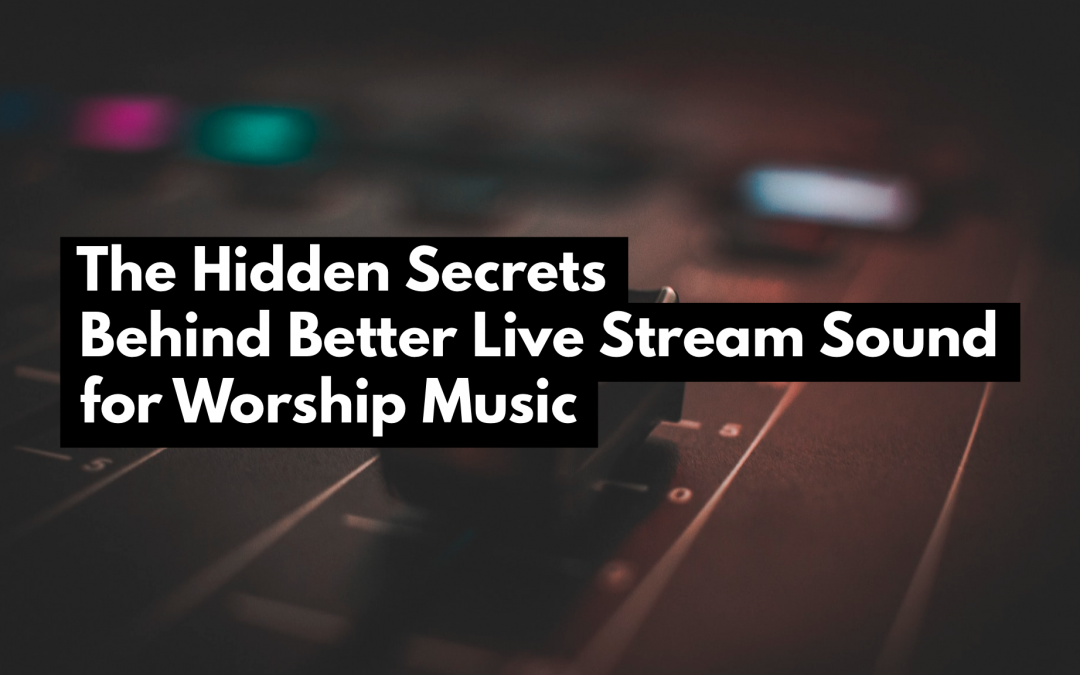Our church has been live streaming for many years and we have just recently come across some major improvements that dramatically and noticeably changed our live stream sound. It went from sounding like you’re in a can to sounding very pleasant! I hope these tips help you.
Independently Mixing the Live Stream
Being able to mix the live stream was the first step. Our front of house mixer is a Midas M32 so it was easy to know what we would get for our live stream as Midas/Beheringer makes it super easy to connect the board with a single Ethernet Cable. With that 1 cable, our Live Stream M32 mixer can independently mix all the same inputs that is at our Front of House. Once we figured out how AES.
If you don’t have the capabilties of adding another mixer, here might be some options for you:
Use an Auxiliary Feed
This is a great option if you have an open Aux. If you don’t have a dedicated person to mix for live stream, you could set a rough mix, but then that what it’s going to be… rough and dry.
If you’re using a digital board that has remote access you can mix the feed from another room. While you can mix the levels you will be limiting yourself on Effects and Processing, you will be limited to what the Front of House mix needs.
Use a Matrix and Mix the subgroups
The same as the Auxiliary except you have groupings of channels instead of each individual channel. This can allow for easier mixing.
Use the House Mix
This is where we started and while it served it’s purpose for years, it was far from ideal. You get what you get as the house mix takes priority.
Being able to independently mix only helps if you have…
People Trained on Sound just for the Live Stream Mix
The trained sound people should be able to work well with and understand what kind of mix the worship leader wants. This can be accomplished by:
- Reviewing the Live Stream Mix and getting constructive feedback
- Playing back a recording of practice or previous set to improve EQ & Effects settings.
Even with all of that done, whoever is running sound for the live stream mix can only push out the quality of music he’s getting… what I’m getting at is, the
The Band is Practiced and Prepared
If the band isn’t together or doesn’t know what they are doing, there is no amount of ‘fixing’ that can be done to make it sound good. We have utilized loops to fill in missing players or to cover beginner players and also to use it for a click track to help keep the band tight. Even if you have great musicians and a great live sound there still can be a missing element… and that’s when we found…
Waves SuperRack with SoundGrid Server
If you have a digital board, this is an expansion that will completely take your board to another level. We have a Midas M32 and this expansion opened up a whole world of possibilities. You are able to get effects that are only seen on high dollar board with a simple plugin.
Top Benefits:
- Practically unlimited effect on every channel
- From AutoTune to specialized compressors and processors, the possibilities are unlimited with access to the Waves ecosystem of plugins.
Even if you have somebody trained just for live stream sound, the band is awesome and you have the Wave’s plugins… you can still sound bad if you don’t’ have…
Good Reference Speakers
We made the mistake of having the wrong monitors in the wrong place. They were big and if were mixing close to them, you heard way more low end than high which if you mixed by ear it would sound great to you but horrible on the stream.
We switched to some different near-field monitors and we were in action!
You’ll want to make sure you listen in to the live stream and see how it sounds on multiple devices, TVs, Phones, Laptops, Tablets. Some devices covert a stereo feed to mono and it may sound different if you’re mixing in stereo.
While these sound secrets may not be a comprehensive list, they are all tweaks we’ve made to significantly improve our sound. If you have any other tips or tricks, please leave them in the comments! We’re always trying to get better.

